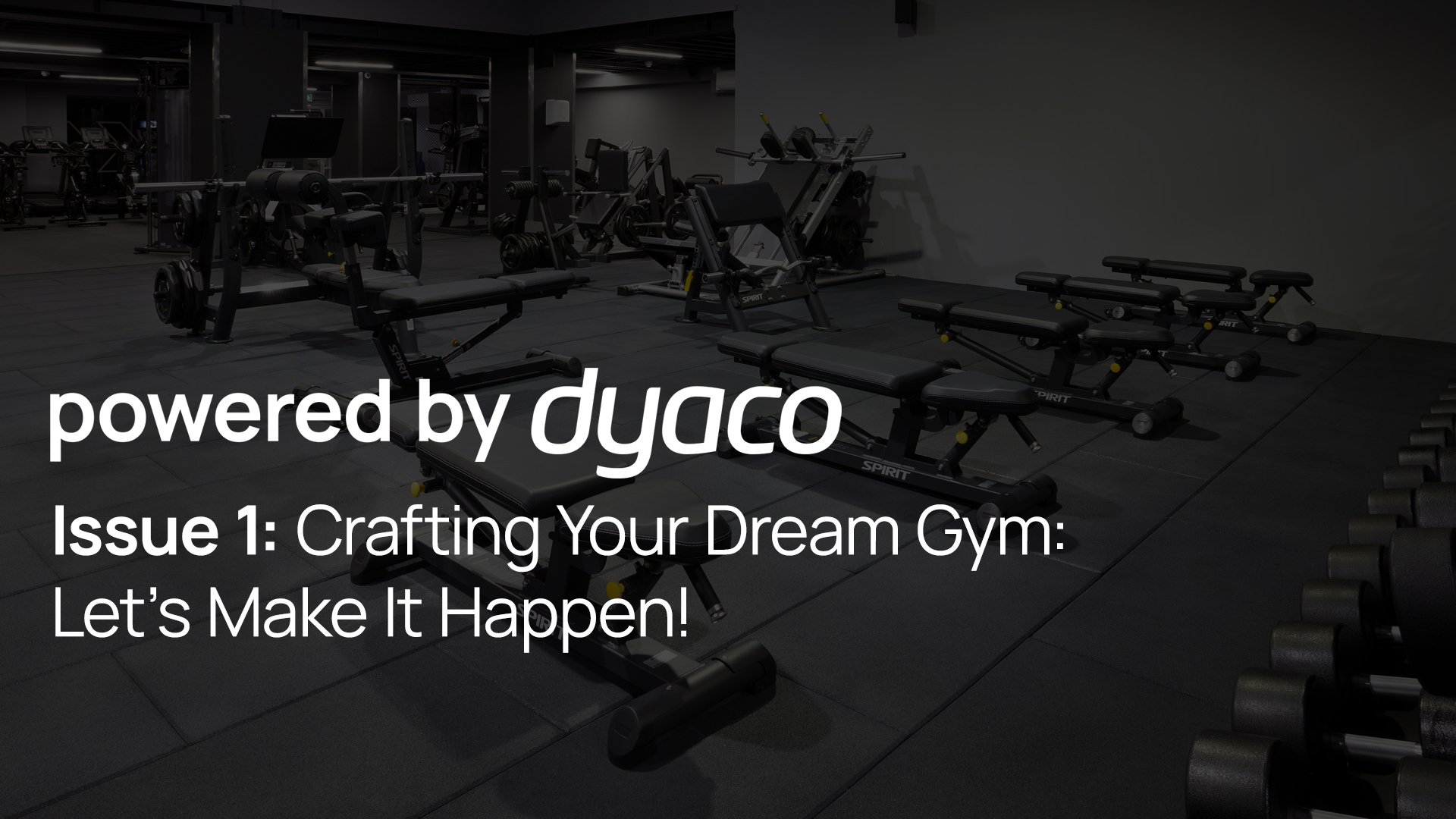Whilst certainly a limitation for any potential facility, having a small floor area is not an immediate death sentence for your ambitions of creating a complete gym. Not every facility has the space to play with, but with strategic kit selection and calculated positioning, you can still deliver a complete fitness experience.
In this guide, we’ll explore the key factors to consider to maximise your floor space, the type of equipment you should install, and a quick example of what a complete gym would look like.
1) Consider the equipment’s ‘Real Footprint’
Before we start talking about kit, it is important to understand how much space each piece of equipment actually needs. This is different from the ‘footprint’ the manufacturer will quote.
Think of it in terms of the space you need to get in position to use the machine, as well as space for making adjustments. Essentially, the space you need to effectively use the machine is its ‘real footprint’.
For example, treadmills only need space to get onto the belt, and some run off behind, so as a result, they take up relatively little effective floor space (which is why you regularly see them being placed so close together or facing a wall). But equipment like bench presses need space in front to get on the bench, by the sides to (un)load the plates, and space behind for a spotter.
Choosing equipment that requires a minimal ‘real footprint’ is the perfect way of making the most of your available space.
2) Establish what kit you need and prioritise the most optimal pieces
So, with real footprints in mind, what equipment should you prioritise for a small space?
Strength
When it comes to strength equipment, it is important to offer a diverse range of kit to accommodate different user needs (we created a blog explaining this in more depth that you can read here).
Pin-select machines isolate a specific muscle group and guide the user through a fixed motion. They offer safety and stability, making them ideal for beginners or those recovering from an injury. However, the caveat is that you require a full suite of pin-loaded machines to hit every muscle group. One solution to remedy this is to utilise Dual pin select machines. These machines combine two movements into a single unit, allowing you to save valuable space on your gym floor.
Functional trainers are also exceptional for space efficiency, capable of targeting every major muscle group whilst taking up minimal floor space.
A free weights area is also required for a complete gym, and fortunately for the versatility they offer, they don’t require a lot of space and can often be used for multiple purposes:
- Dumbbells, kettlebells, and barbells: can facilitate almost any exercise
- Benches- can support a whole host of dumbbell exercises (just be sure to allow a decent amount of clearance for exercises such as flys, split squats or rows)
- Squat racks- used for squats, presses, bench
- Lifting platforms- used for deadlifts, Olympic lifts, rows
Cardio
As for cardio, you have a lot of options depending on the shape of your space. Treadmills, ellipticals and stairclimbers can all be accessed from the back and have guardrails, allowing you to line them up closely and place them against walls. Whereas rowers and bikes both require access from the side, however, make up for this by being smaller machines, enabling them to be placed in the centre of a cardio zone.
It is also important to consider HIIT cardio, which typically has a smaller footprint than traditional cardio options and are typically self-powered, whilst also facilitating a different style of training, making them a versatile addition to any cardio area.
Identify what your member's expectations are and what space you have, then lay out this zone accordingly.
3) Getting the layout right
In an ideal world, you would break up the gym into distinct zones, however this might not be possible with space restrictions. Despite this it a good idea to try keep areas as defined and close together as possible.
If starting from scratch, it is a good idea to evaluate the space and plan your kit placement around the shape of your building. Identify what space would be most optimal for a specific purpose, for example, a long thin strip could fit a row of treadmills, or an odd-shaped corner could be ideal for a bench press & spotter or just wide enough for a cardio bike to slide in.
4) Use 3D modelling to create a realistic preview of your gym
Creating a gym is a big investment, especially when you don’t have the room to accommodate mistakes or delays. 3D modelling allows you to accurately visualise your space before installation, giving you a good idea of how your proposed layout will work in practice and foresee where improvements can be made.
Want to get more out of your space?
Our team of consultants have decades of experience in creating unique fitness spaces across numerous sectors, budgets and requirements, kitting out gyms of all shapes and sizes.
Using our in-house CAD expertise and robust product mix, we can design a bespoke solution for any facility looking to create or change a space, regardless of the size, we will optimise it. Get in touch today.









